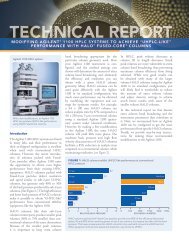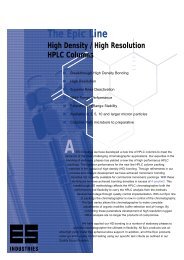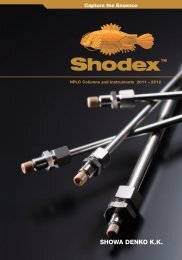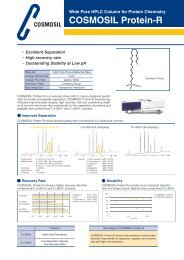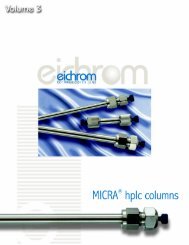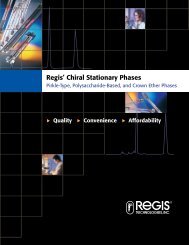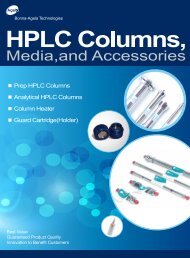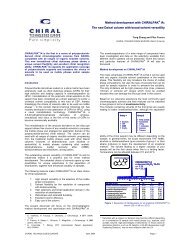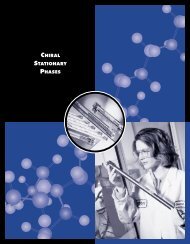Create successful ePaper yourself
Turn your PDF publications into a flip-book with our unique Google optimized e-Paper software.
ACE Guard <strong>Columns</strong><br />
ACE Integral Guard <strong>Columns</strong><br />
Guard column is incorporated into the analytical column’s<br />
inlet end-fitting<br />
Ultra low dead volume design provides protection without<br />
degrading performance<br />
Easy to change cartridge design<br />
(> 10 mm), the more typical st<strong>and</strong>-alone style of guard columns are<br />
available packed with the appropriate stationary phase.<br />
resolution, choose a 250 mm column with 5 μm particle size.<br />
ACE analytical columns are manufactured with state-of-the-art<br />
column fittings that incorporate the guard column as an integral<br />
part of the analytical column. To install a guard column on an ACE<br />
analytical column, simply replace the st<strong>and</strong>ard column inlet endfitting<br />
with the end-fitting designed as a guard column holder. Then,<br />
insert a guard cartridge packed with the desired stationary phase<br />
into the guard column holder (See photograph). Don’t worry about<br />
disturbing the packing bed when installing the guard column holder.<br />
It is well protected by a PEEK frit cap, even with the column endfitting<br />
removed.<br />
The integral guard column system is available for columns with<br />
internal diameters of 2.1, 3.0, <strong>and</strong> 4.6 mm. For preparative columns<br />
St<strong>and</strong>-alone style guard column holders are also available for<br />
situations where they are preferred or required. A column coupler<br />
(p/n C0001), or connection tubing <strong>and</strong> fittings, will be required to use<br />
this style of guard column.<br />
Using a guard column to protect your analytical column can<br />
substantially increase column lifetime <strong>and</strong> improve the quality of<br />
your chromatography. But, to be effective, the guard column must be<br />
replaced often enough to prevent contaminants from saturating the<br />
guard column <strong>and</strong> bleeding through to the analytical column. The<br />
best way to determine the optimum time to replace a guard column<br />
for a specific set of sample <strong>and</strong> mobile phase conditions is through<br />
experience. However, it is helpful to have some quantitative measure<br />
to help make the replacement decision. By monitoring plate number<br />
(N), pressure (P), <strong>and</strong> resolution (R s<br />
), the performance of the guard<br />
<strong>and</strong> analytical column can be closely watched to determine when<br />
a guard column should be replaced. We suggest replacing the<br />
guard column when any one of these parameters changes by more<br />
than 10%.<br />
36



